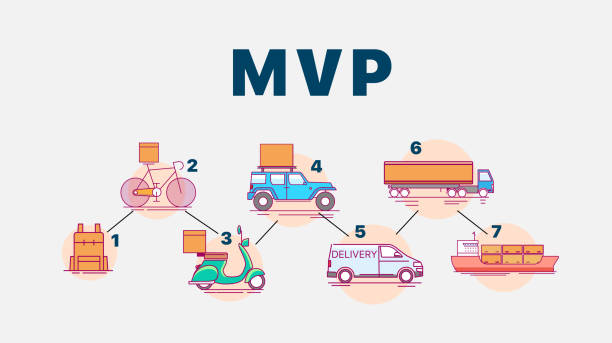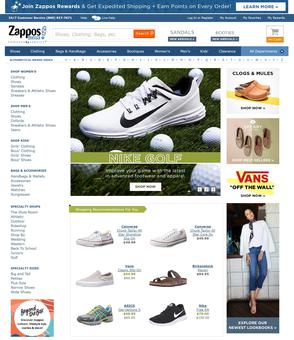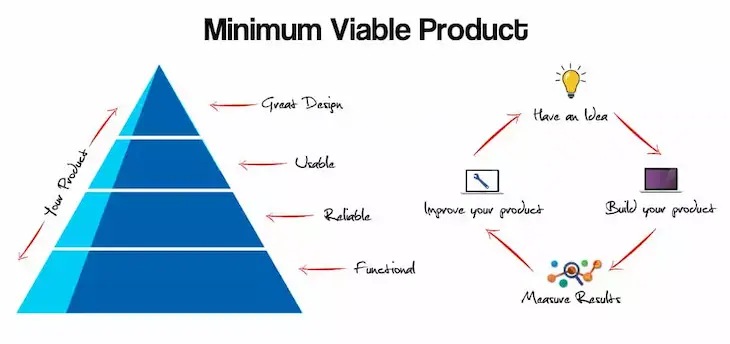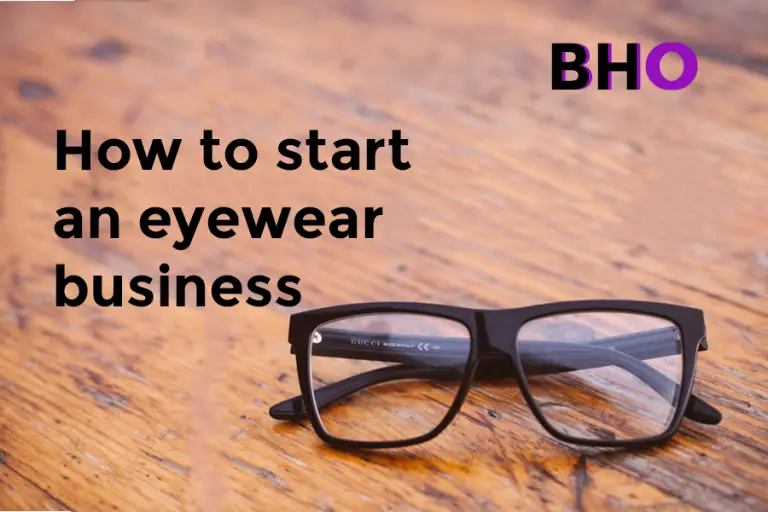The MVP: Accelerate Your Path to Unstoppable Business Success

Table of Contents
The ultimate guide to building a successful MVP.
No business wants to spend resources on a product only to discover it doesn’t have a market.
In this day and age, many business owners grapple with the vacillating certainty that their brilliant product idea will resonate with their target audience. The traditional approach to this dilemma used to be (and still is for many) to invest heavily in product development potentially making the product ‘irresistible’ only to discover later that it flops. An MVP is the smarter method and safer technique for product development and this has worked for big names like Facebook, Airbnb, Uber, etc.
Another good example is the website ‘Zappos’. A young guy wanting to own a particular pair of shoes went to a nearby shop but was unsuccessful. He found the colour he wanted but not the size, he later found the size but not the colour he wanted. Frustrated, he came up with an idea to sell shoes online, and that’s where it all started. The concept of a Minimum Viable Product was born.

Rather than conducting extensive and expensive market research, he built a simple website. Then, he approached a shoe store, clicked pictures of shoes, and placed them on his site. Upon receiving the order, he purchased the shoes from the store and shipped them out.
Despite losing money on each sale, it was a fantastic method to test a business concept. He began developing his idea into a fully operational firm once he built a strong customer base and realized that clients were eager to buy shoes online.
This is how Nick Swinmurn founded Zappos, a business that Amazon eventually purchased for a sum of USD 1.2 billion.
The method Nick used is now known as MVP Development.
What is an MVP?
An MVP is a stripped down version of your product with just enough features to validate its core concept with real users, who can then provide feedback for future product development. It is a strategic approach to product development that focuses on delivering maximum value with minimum effort.

By prioritizing core functionalities over bells and whistles, you can get your product into the market quickly, gather valuable user feedback, and iterate based on insights.
Note however, that the minimum effort does not mean an MVP is the barest minimum that can be developed. It has to be viable too, meaning that the design of a Minimum Viable Product has to be empathetic to its users and their needs, must be reliable and above all- functional.

Why do you need an MVP?
The goal of building an MVP is to launch a product on a budget to cover for losses if the product is not marketable and iterate based on the feedback of consumers. With it, you can find the right audience, get familiar with their needs, pull solutions based on their feedback and save time.
You should build an Minimum Viable Product because:
- 90% of start-ups fail.
- 29% of start-ups fail because they run out of cash.
- Start-ups that scale properly grow 20 times faster than those that scale prematurely.
- 34% of small businesses that fail lack the proper product-market fit: basically they’re making products no one wants.
- The average cost of launching a startup is $3,000; depending on the industry and country of course.
- 10% of new businesses don’t survive the first year.
- First-time startup founders have a success rate of 18%.
- 22% of start-ups that fail don’t have a sound marketing strategy.
- The average venture capital firm receives more than 1,000 proposals per year.
The MVP advantage
Building an MVP offers several advantages:
- Reduced operating costs: by focusing on core features, you can save time and resources compared to developing a full-fledged product. MVPs help you create exceptional products without spending thousands (or millions) of dollars in development and marketing costs. As the entry cost is low, you can easily create multiple iterations of your MVP till you can finally build the products your customers need.
- Faster validation: get real world feedback early on to validate ideas and identify areas of improvement.
- Adaptability: the MVP’s flexibility allows you to pivot based on user feedback ensuring the product stays relevant.
- Business and Marketing: MVPs are built for learning and understanding your product’s acceptance in the market with actual customers. You get to introduce your product and create some buzz for it before the launch, and this even helps you to nurture a community of potential buyers for your product.
- Proof of Concept: By creating an MVP, the company will obtain vital technical knowledge by creating a minimal feature set and doing the necessary programming, which will help them differentiate their app.
Potential drawbacks:
- Limited functionality: an MVP may lack features that users expect from a finished product, which could lead to a negative first impression.
- The competition may catch up: Understand that others might have the same idea as you and your competition might catch up faster than you expect. Others might also see your product, find its shortcomings, improve it and create a niche product for themselves that is better than yours and make you lose market share.
- Improper representation and visibility: One potential drawback of an MVP is that it may not accurately represent your final product or service. Since MVPs are designed to be lean and minimalist, they may lack some of the features or functionality that users expect from a fully-featured product.
- Scalability challenges: an MVP’s architecture may not be equipped/designed to handle a large user base, potentially causing issues as your product gains traction.
- Technical debt: focusing on spread over code quality can lead to technical debt, making it harder to add features and updates later on.
How to build a winning MVP:
Understanding all the steps involved in building an MVP is crucial to its success. These steps include:

- Start with market research/Define the problem: clearly identify the problem (problem statement) your product solves and the target audience it benefits. The best way to identify the issues that resonate with your users would be via conducting in-depth market research, user interviews, conducting surveys, etc. A business’s chances of success increase with the amount of information it possesses. Remember to monitor the offerings of your competition as well as how your product concept might stand out.
- Ideate on value addition/Prioritize features: focus on the core functionalities that deliver the essence of your product’s value proposition.
What benefits may users expect from the new product? How is it going to help them? Why would people purchase the item? The value proposition of the app can be defined in part by the responses to these queries.
The important estimations for the product should also be evident. As MVP implies, the product has to introduce value to the people in its most basic state. Begin by outlining the users and build the MVP based on their needs.
- Map out user flow: this includes the design process and the product must be designed in a way that reflects the user’s perspective. The focus should be on basic tasks such as finding and buying the product or managing, tracking and receiving orders rather than all other extra features. These are the goals that the end-users will have while using the product. When each of these procedure stages is laid out, it is time to define the features of each step.
- Prioritize MVP features: Categorize all the remaining MVP features based on high priority, medium priority, and low priority. Another essential step is to arrange these features in the product backlog (priority-wise). It is time to begin building an MVP. If a business wants to see how its future product will look, it can create an MVP prototype.
- Design for feedback: make it easy for users to provide feedback through surveys, in-app ratings or direct communication channels.
- Launch and learn: release your MVP to a select group of users and actively gather their feedback. A company can develop the MVP once it has determined the key qualities and studied the demands of the market. Keep in mind that an MVP must still satisfy the needs of the consumer and is not of lesser quality than the finished product. As a result, it needs to be user-friendly, appropriate and engaging.
Review everything once more after releasing the MVP. The business needs to hear from its customers regarding the release. Based on their feedback, they may assess how accepted and competitive their products are in the market.
Conclusion
Building an MVP is not just about creating a product – it’s about validating your idea, learning from your users, and ultimately building something that people love. By following the steps outlined in this article, you can harness the power of the MVP to turn your startup dream into a reality. So what are you waiting for? Get out there and start building!
References
- A Step-by-Step Guide to Build a Minimum Viable Product (MVP)
- The Minimum Viable Product
- Top Successful Businesses That Started With MVP Development | Altamira
- How Zappos Went from an Unpopular Idea to $1.2 Billion in Just 10 Years
- How to Build a Minimum Viable Product: A Step-by-Step Guide – nearshorefriends_EN
- Advantages/Disadvantages of MVP – The Good, The Bad & The Essentials








